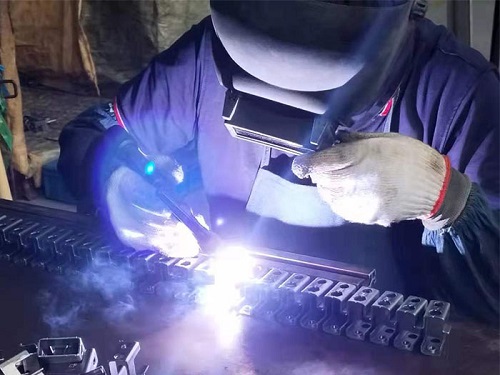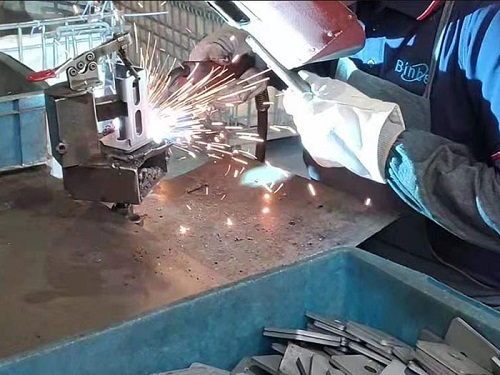TIG Welding
TIG welding is a welding technique that uses argon as a shielding gas. Also known as argon gas shielded welding. It is to pass argon shielding gas around the arc welding to isolate the air from the welding area and prevent the oxidation of the welding area.

Advantages:
1. Argon protection can isolate the adverse effects of oxygen, nitrogen, hydrogen, etc. in the air on the arc and molten pool, reduce the burning of alloy elements, and obtain dense, high-quality, and relatively pure welded joints.
2. The arc combustion of TIG welding is stable, with less spatter, and there is no need to clean the slag after welding.
3. TIG welding is open arc welding, which is convenient for operation and observation.
4. The electrode loss is small, the arc length is easy to maintain, and there is no flux or coating layer during welding, so it is easy to realize mechanization and automation;
5. TIG welding can weld almost all metals, especially some refractory metals and easily oxidized metals, such as magnesium, titanium, molybdenum, zirconium, aluminum, etc. and their alloys;
6. All-position welding can be carried out without being restricted by the position of the weldment.
Disadvantages:
1. Due to the large heat-affected area of TIG welding, the workpiece will often cause deformation, high hardness, blisters, local annealing, cracking, pinholes, abrasion, scratches, undercuts, or insufficient bonding force and internal stress damage after repair. shortcoming.
2. Compared with electrode arc welding, TIG welding is more harmful to the human body. The current density of TIG welding is large, and the light emitted is relatively strong. The ultraviolet radiation generated by its arc is about 5 to that of ordinary electrode arc welding. 30 times, infrared is about 1 to 1.5 times that of electrode arc welding. The ozone content generated during welding is higher. Therefore, try to choose a place with better air circulation for construction, otherwise, it will cause great harm to the body.
3. For metals with a low melting points and easy to evaporate (such as lead, tin, zinc), soldering is more difficult.
CO₂ Shielded Welding
The CO₂ shielded welding (full name carbon dioxide gas shielded welding) process is suitable for low-carbon steel and low-alloy high-strength steel various large-scale steel structure engineering welding. It has high welding productivity, good crack resistance, small welding deformation, and a large deformation range. Welding of thin and medium-thick plates.
Advantages:
1. CO₂ shielded welding has a strong penetrating ability, high welding current density (100-300A/m2), small deformation, and high production efficiency.
2. The carbon dioxide gas is cheap, the cleaning of the workpiece before welding can be simplified, and the welding cost is only 40%-50% of the electrode arc welding.
3. The welding seam has strong rust resistance, low hydrogen content, and low cold cracking tendency.
Disadvantages:
1. There are many metal splashes during welding, especially when the process parameters are not adjusted to match.
2. Metal materials that are easily oxidized cannot be welded, and the ability to resist wind is poor. Windproof measures are required when working in the field or when working in the sky.
3. The welding arc is strong, pay attention to the arc radiation.
In order to meet the different needs of customers, Binbei Machinery can provide a variety of welding services, especially good at TIG welding and CO₂ shielded welding.

